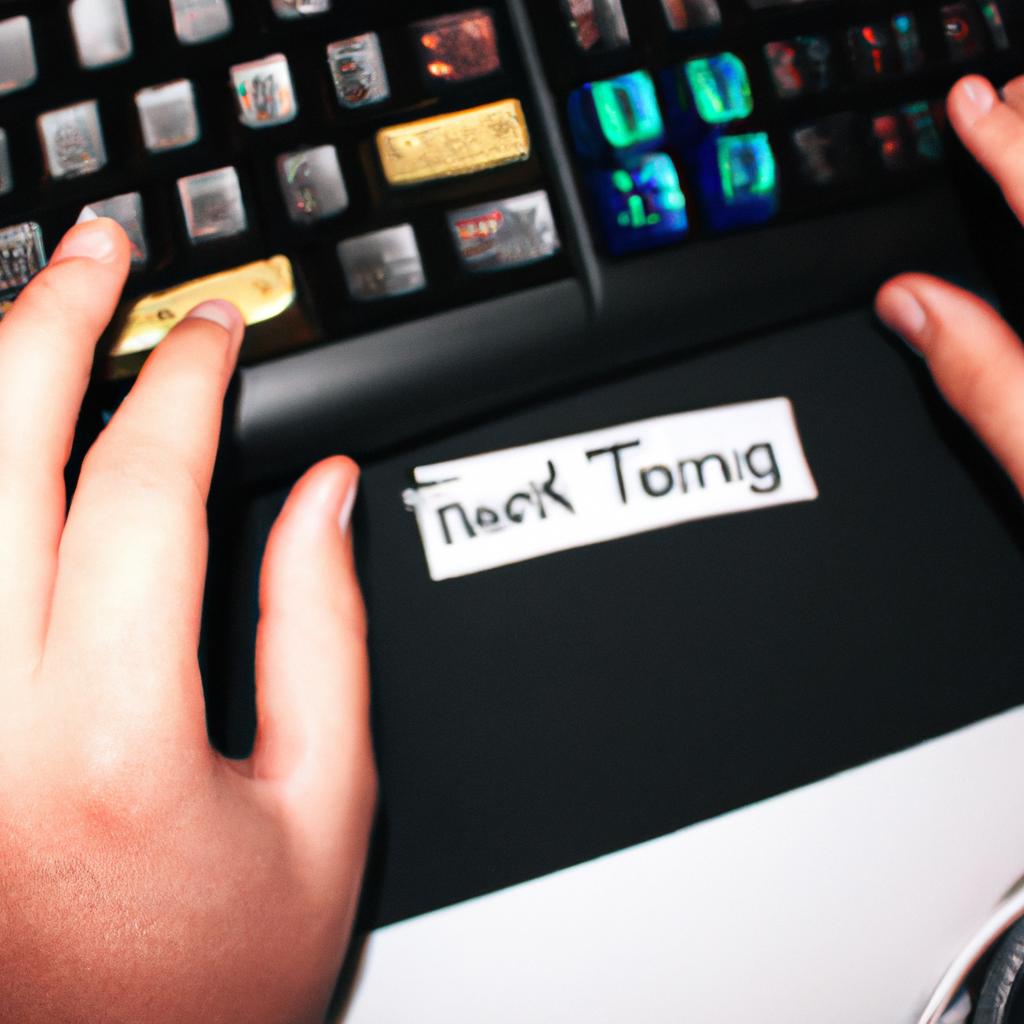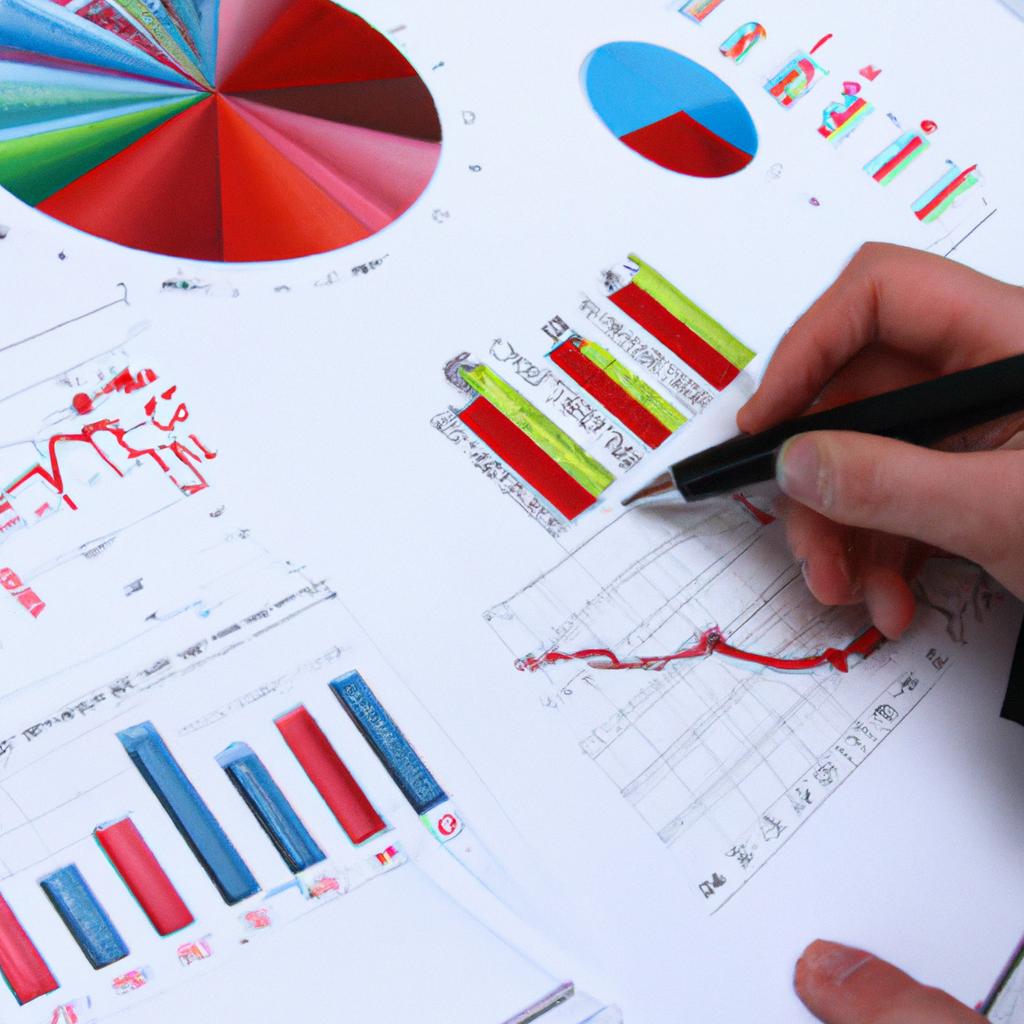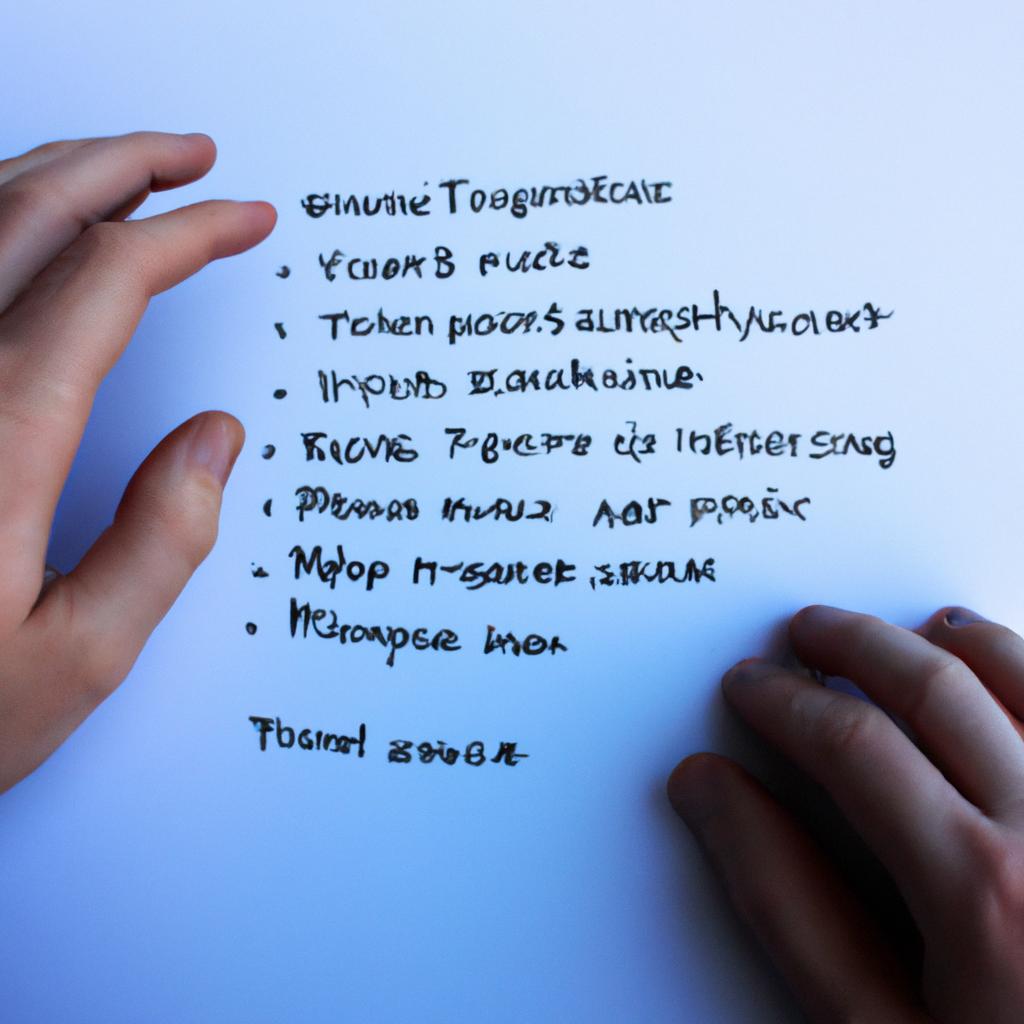The concept of item rarity in online gaming has always been a fascinating subject for both players and researchers alike. The virtual world of Runescape, a popular MMORPG (Massively Multiplayer Online Role-Playing Game), is no exception. In this article, we will delve into the intricate mechanics of gold trading within the context of item rarity in Runescape. To illustrate these concepts, let us consider a hypothetical scenario where a player stumbles upon an exceptionally rare item – the fabled Dragon Platebody.
Understanding how certain items acquire their rarity value is essential to comprehend the dynamics of gold trading within the game’s economy. Items like the Dragon Platebody are considered highly valuable due to their scarcity and desirability among players. As such, they become sought-after commodities that can significantly impact the in-game market. Examining the factors that contribute to an item’s rarity status provides insight into why certain objects hold immense worth while others remain relatively common. By exploring these intricacies, we can gain a deeper understanding of the complex ecosystem that surrounds gold trading mechanics in Runescape.
Understanding Item Rarity
In the world of online gaming, item rarity plays a significant role in determining the value and desirability of virtual items. Consider, for example, the popular MMORPG game Runescape, where players can trade various items with each other using an in-game currency called gold. One such coveted item is the ‘Dragon Scimitar,’ known for its exceptional strength and versatility in combat scenarios.
To comprehend item rarity in Runescape, it is essential to understand how it is classified. Items are typically categorized into several tiers based on their scarcity and usefulness within the game’s mechanics. This classification system allows players to gauge an item’s worth and make informed decisions during trading activities.
There are several key factors that contribute to understanding item rarity:
-
Drop Rate: Each item has a specific drop rate assigned to it, which determines how frequently it appears as loot from defeating monsters or completing quests. Lower drop rates indicate rarer items that require more effort and luck to obtain.
-
Demand: The demand for certain items influences their perceived rarity. If a particular weapon or armor piece offers superior stats or unique abilities, players will be willing to pay higher prices for them, further enhancing their rarity status.
-
In-Game Events: Special events organized by the game developers often introduce limited-time items that cannot be acquired through regular gameplay methods. These exclusive items hold immense value due to their temporary availability and may become highly sought after among collectors.
-
Player Trading: The dynamics of player-to-player trading also impact item rarity. Certain rare items might have multiple owners who refuse to sell them at any price, making these possessions even scarcer on the market.
For a visual representation of this concept, consider the following table showcasing different levels of item rarity:
| Rarity Level | Description | Examples |
|---|---|---|
| Common | Frequently encountered | Plain Steel Sword |
| Uncommon | Moderately rare | Mithril Platebody |
| Rare | Scarce and highly desired | Dragon Scimitar |
| Legendary | Exceedingly rare | Abyssal Whip |
Understanding item rarity in Runescape involves analyzing these factors and their interplay to make informed decisions during trading activities. In the subsequent section, we will delve deeper into the various factors that affect item rarity, shedding light on how they shape the game’s economy.
By comprehending the intricacies of item rarity, players can navigate the virtual marketplace more effectively and maximize their chances of obtaining valuable items within Runescape.
Factors Affecting Item Rarity
Understanding Item Rarity in the context of gold trading mechanics is crucial for players to navigate the dynamic marketplace of Runescape. In this section, we will delve deeper into the factors that contribute to item rarity and its influence on player behavior.
Consider a hypothetical scenario where a highly sought-after rare armor set becomes available through limited-time events or challenging quests. This armor set possesses unique attributes and aesthetics, making it desirable among players seeking prestige and individuality within the game. The scarcity of such items contributes significantly to their perceived value and subsequently affects their market price.
When examining item rarity, several key factors come into play:
- Drop Rate: The likelihood of obtaining a particular item from various sources influences its rarity. Items with lower drop rates are typically harder to acquire, resulting in increased demand and higher prices.
- Exclusivity: Limited availability can greatly impact an item’s rarity. Exclusive rewards tied to specific achievements or seasonal events create a sense of exclusiveness, driving up both desirability and value.
- Historical Significance: Some items gain rarity over time due to being discontinued or phased out by game updates. These “legacy” items often hold sentimental value for long-time players and tend to command high prices as collectors’ items.
- Player Demand: Ultimately, player demand plays a significant role in determining an item’s rarity status. If an item gains popularity due to its usefulness or aesthetic appeal, its scarcity increases as more players seek ownership.
To better illustrate how these factors interact, let us consider the following table showcasing three different types of items commonly found in Runescape:
| Item Type | Drop Rate | Exclusivity |
|---|---|---|
| Common | High | Widely Available |
| Uncommon | Moderate | Seasonal Rewards |
| Rare | Low | Achievement-based |
As evident from the table above, common items possess higher drop rates and are readily available, resulting in lower demand and subsequently lower prices. On the other hand, rare items have significantly lower drop rates and often require specific achievements, making them highly sought after by players.
Understanding item rarity is vital for both buyers and sellers within the Runescape gold trading market. Buyers can make informed decisions based on an item’s rarity to ensure they are investing their resources wisely. Likewise, sellers can accurately price items, taking into account their scarcity and demand.
In the subsequent section about “Determining the Value of Rare Items,” we will explore how these factors intertwine with market dynamics to assign value to rare items without relying solely on their rarity status alone. By understanding both rarity and value determination, players can engage more effectively in gold trading mechanics while maximizing their gaming experience.
Determining the Value of Rare Items
In the previous section, we explored various factors that can influence the rarity of items in Runescape. Now, let us delve deeper into the mechanics behind determining the value of these rare items.
To better understand this concept, consider a hypothetical scenario where a player discovers a unique and exceptionally powerful weapon known as the “Blade of Legends.” This weapon possesses extraordinary abilities that make it highly sought after by other players within the game.
One crucial factor that affects item rarity is its level of scarcity or availability. The more limited an item’s supply, the higher its perceived value becomes. In our example, if the Blade of Legends were to be obtained only through defeating a mythical boss with an incredibly low drop rate, its scarcity would significantly contribute to its rarity and subsequently increase demand for it among players.
Another aspect influencing item rarity is its desirability or usefulness within gameplay mechanics. Items that provide significant advantages or enhancements often become highly coveted by players seeking to improve their characters’ performance. For instance, if the Blade of Legends grants exceptional damage output and special abilities that surpass any other existing weapons in Runescape, it will undoubtedly generate considerable interest from both competitive and casual players alike.
Furthermore, social perception also plays a role in determining item rarity. Peer influence and community recognition can heavily impact how valuable an item is perceived to be. If influential members of the gaming community endorse and celebrate certain rare items like the Blade of Legends as symbols of status and accomplishment, their desirability escalates further, fueling bidding wars and intense competition among players aiming to possess them.
- Scarcity: Limited supply increases perceived value.
- Desirability: Useful and advantageous attributes enhance worth.
- Social Perception: Community recognition amplifies desirability.
Now imagine incorporating a three-column table using markdown format:
| Factors | Influence on Rarity |
|---|---|
| Scarcity | Increases perceived value |
| Desirability | Enhances worth |
| Social Perception | Amplifies desirability |
By understanding these factors and their interplay, players can navigate the complex world of item rarity in Runescape more effectively. In the subsequent section, we will examine how supply and demand dynamics further shape the concept of item rarity, shedding light on an essential aspect of this intricate ecosystem.
Understanding the mechanics behind determining item rarity is crucial; however, comprehending the role of supply and demand in influencing its value provides a comprehensive perspective on this fascinating phenomenon.
The Role of Supply and Demand in Item Rarity
In the previous section, we explored the concept of item rarity in Runescape and its impact on gold trading. Now, let’s delve deeper into how players determine the value of rare items within the game’s economy.
To illustrate this process, let’s consider a hypothetical scenario involving a highly sought-after weapon called the “Dragon Scimitar.” This particular item possesses unique attributes and is coveted by many players for its exceptional combat abilities.
When evaluating the value of such items, several factors come into play:
-
Rarity Level: The scarcity of an item greatly influences its worth. In our example, if only a limited number of Dragon Scimitars are available in-game due to their difficulty to obtain, their price will likely be higher compared to more common weapons.
-
Demand from Players: The desirability of an item also affects its market value. If there is high demand among players seeking to improve their combat prowess with a Dragon Scimitar, it will drive up its price as individuals compete to acquire one.
-
Supply Circulation: The availability and circulation of an item can fluctuate over time. For instance, if new content updates introduce alternative weapons that surpass or rival the Dragon Scimitar’s capabilities, its demand may decrease, causing prices to drop accordingly.
-
Player Perception: Lastly, player perception plays a significant role in determining an item’s value. Factors such as reputation within the gaming community or perceived prestige associated with owning certain items can influence pricing dynamics beyond purely functional aspects.
To better understand these considerations, let us examine them through a table showcasing different elements influencing the value of rare items like the Dragon Scimitar:
| Factor | Impact on Value |
|---|---|
| Rarity Level | High |
| Demand from Players | High |
| Supply Circulation | Medium |
| Player Perception | Medium to High |
As we can observe, the rarity level and demand from players are significant drivers of value, while supply circulation and player perception play more moderate roles.
Considering these factors, players engaging in gold trading must carefully analyze market trends and fluctuations to make informed decisions about buying or selling rare items. By understanding the dynamics behind item valuation, they can navigate the ever-evolving economy with greater precision.
Transitioning into the next section on “Strategies for Efficient Gold Trading,” it is crucial to develop a comprehensive understanding of not only item rarity but also effective methods to maximize profits within Runescape’s intricate gold trading mechanics.
Strategies for Efficient Gold Trading
In the previous section, we explored how supply and demand influence the rarity of items in Runescape. Now, let us delve deeper into the mechanics of gold trading and its relationship with item rarity.
To better understand this connection, consider a hypothetical example involving a highly sought-after item called the “Dragon Platebody.” Due to its scarcity and high demand among players, it has become an emblematic symbol of wealth within the game. As a result, many players are willing to pay exorbitant amounts of gold for this rare piece of armor.
The interplay between supply and demand affects both the availability and price of such coveted items. Here are some key factors that contribute to the dynamics of gold trading:
-
Limited Supply: Rare items like the Dragon Platebody have limited sources from which they can be obtained. This scarcity drives up their value as players compete to acquire them.
-
Player-driven Market: In Runescape’s economy, prices are determined by player interactions rather than fixed algorithms or developer interventions. This means that market fluctuations arise naturally as players negotiate trades based on perceived value.
-
Speculation and Investment: Given the potential profits associated with owning rare items, some players engage in speculative trading strategies. They may buy low-priced items in anticipation of future price increases or sell high when demand is at its peak.
-
Economic Events: Significant updates or events within the game can impact item rarity and consequently affect gold trading dynamics. For instance, if an update introduces new content with powerful equipment rewards, existing rare items might experience decreased demand and lower prices.
Table: Examples of Factors Affecting Item Rarity
| Factors | Impact on Item Rarity |
|---|---|
| Limited Supply | Increases rarity value |
| Player-driven Market | Facilitates organic price discovery |
| Speculation & Investment | Influences price fluctuations |
| Economic Events | Alters demand and availability |
Understanding the mechanics of gold trading in relation to item rarity is crucial for players seeking to navigate the intricate Runescape economy. By recognizing how supply, demand, speculation, and economic events shape prices and availability, players can make more informed decisions when engaging in gold trading.
Transitioning seamlessly into the subsequent section about “Implications of Item Rarity for Runescape Players,” we will explore how understanding these dynamics can empower players to maximize their gaming experience and financial gains.
Implications of Item Rarity for Runescape Players
Having discussed strategies for efficient gold trading in the previous section, it is now important to delve into the implications of item rarity for players in the popular online game, Runescape. To illustrate this further, let us consider a hypothetical scenario involving a highly sought-after rare item called the “Dragon Defender.”
The Dragon Defender is known for its exceptional combat stats and scarcity within the game. Due to its limited availability and high demand from players seeking an edge in battles, the price of a Dragon Defender can fluctuate significantly over time. This volatility introduces both opportunities and challenges for those engaged in gold trading.
Understanding the implications of item rarity is crucial when navigating the dynamic economy of Runescape. Here are some key points to consider:
-
Investment Potential: Rare items like the Dragon Defender have substantial investment potential since they tend to appreciate in value over time. Savvy traders who possess such items can capitalize on their rarity by strategically timing their sales, thus maximizing profits.
-
Market Manipulation Risks: The scarcity of certain rare items makes them vulnerable to market manipulation tactics. Unscrupulous players may attempt to artificially inflate prices or manipulate supply, leading to imbalances that impact other participants in the gold trading ecosystem.
-
Player Experiences: The presence of rare items adds excitement and aspiration among players striving to obtain them. The pursuit of these elusive treasures becomes a driving force behind many adventurers’ gameplay experiences, fostering a sense of accomplishment upon acquisition.
To provide a visual representation, here is an example table showcasing different rarities and corresponding average prices obtained through player-driven transactions:
| Rarity | Average Price (in Gold) |
|---|---|
| Common | 500 |
| Uncommon | 5,000 |
| Rare | 50,000 |
| Legendary | 500,000 |
This table demonstrates the vast differences in value that rarity can confer upon items within the Runescape economy. These variations not only influence trading dynamics but also contribute to the overall immersion and emotional investment players have in the game.
In summary, understanding item rarity is essential for successful gold trading in Runescape. It offers opportunities for profit through investments while also presenting risks associated with market manipulation. Moreover, rare items enhance player experiences by providing aspirational goals and a sense of achievement when obtained. By considering these implications, players can navigate the complex world of gold trading more effectively as they strive for success in their virtual endeavors.




